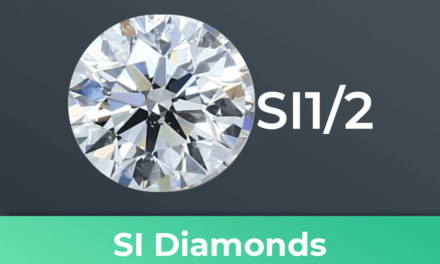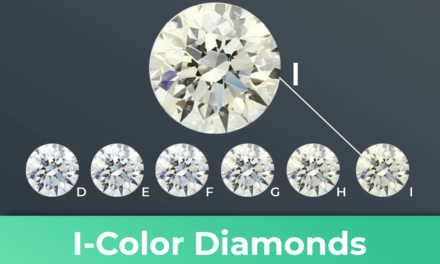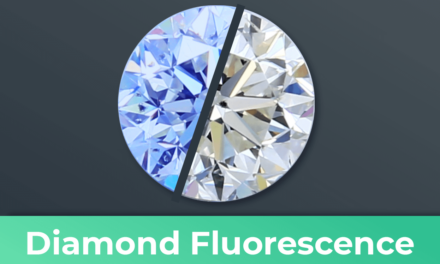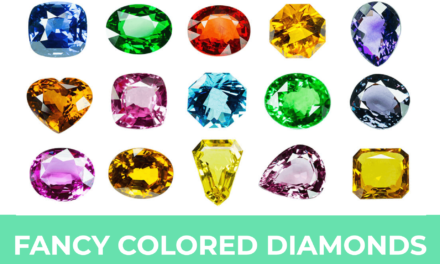My website is reader-supported. Buying through links on my site may result in me earning a CUSTOMER REFERRAL FEE at no extra cost to you.
Check out the latest deals at our top diamond vendor choice: James Allen
Platinum vs White Gold – Which One Is Better?
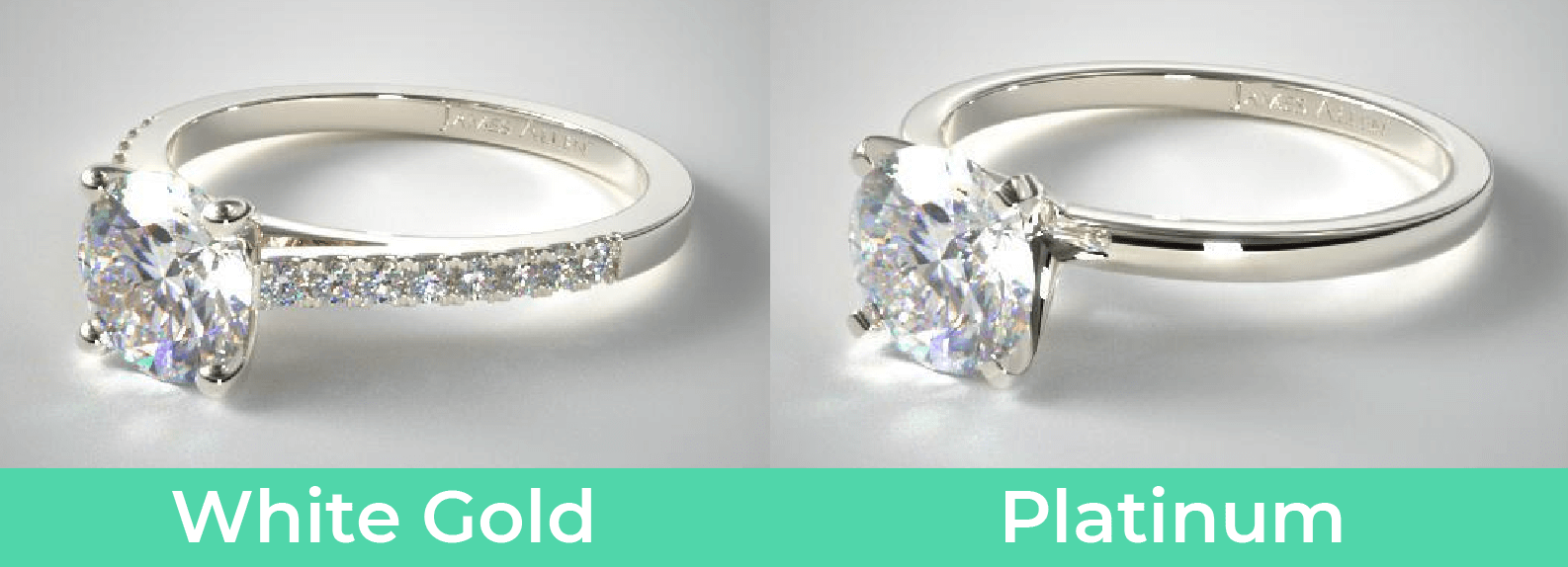
When buying a wedding or an engagement ring, most people choose either a white gold or platinum ring. But before you go out and purchase one, it’s important to understand the difference between platinum and white gold.
While both metals are popular choices for wedding and engagement rings, they have different properties that could make one more suitable for your needs than the other. Here, we’ll take a look at the pros and cons of each metal so you can make an informed decision before buying an engagement ring.
Jump to the section:
- Most important facts about white gold rings
- Most important facts about platinum rings
- Can you tell the difference between platinum and white gold?
- How much does a platinum vs white gold ring setting cost?
- Which metal is better suitable for skin prone to allergies?
- Which one is more durable and needs less maintenance?
- Conclusion: Is platinum better than white gold?
The most important facts about white gold rings
A white gold engagement ring is a very popular choice, even more popular than a yellow gold ring setting.
It’s made up of a combination of gold alloys, along with white metals like palladium, nickel and silver. The quantity of alloy vs. gold content determines the karat or level of gold purity.
Pure gold is 24 karats, but the problem with pure gold is that it’s so soft it can be easily damaged. Therefore, it just doesn’t make sense for everyday wear. Also, there is no such thing as “pure white gold,” as gold is inherently yellow in color.
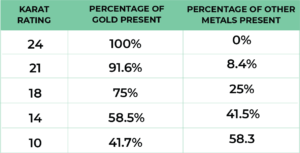
To increase the durability of gold and to change its color, jewelers mix it with other metals. For example, 18k white gold is 75% gold and 25% metal alloys, which helps it maintain its high value. But, 18k white gold jewelry is still soft and can easily dent or otherwise get damaged. Thus, 14k white gold may be a better choice.
Jewelry made with 14k white gold contains 58.3% gold and 41.7% alloys. Alloys add significantly more strength and durability, making 14k white gold far less prone to scratches than pure gold. Plus, jewelry made of 14k white gold is initially much less expensive.
Below you can see a couple of typical white gold ring settings:
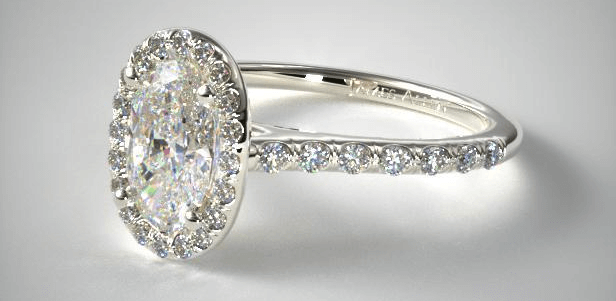
(you can find more beautiful halo engagement rings here)

(find more solitaire engagement ring settings here)
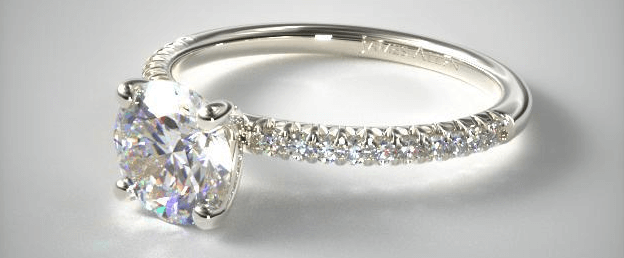
(check out pave ring settings here)
The most important facts about platinum rings
Platinum is a precious metal naturally and white. Unlike pure gold, it does not need to be mixed with other metals or alloys to achieve its look. Nearly all platinum jewelry contains approximately 95% pure platinum, with 5% consisting of other pure alloys.
Platinum’s distinctive soft white tone is gorgeous, but that’s not its only asset.
The metal is also extremely strong, very durable, and heavier than gold. In fact, it was not even available on the open market during past wars, as the military needed it.
The truth is that of all the metals, platinum is the densest and most durable, which explains why it costs the most. Since platinum is denser than white gold by about 20%, it’s 2.5 to 5 times as expensive as white gold. Therefore, platinum is an excellent choice for people seeking durable, long-lasting engagement and/or wedding rings.
However, since it’s less pliable, platinum is not at all easy to work with. This means that labor costs are higher for molding platinum jewelry, increasing the price. While jewelry will inevitably get scratched and diminish over time when platinum gets scratched no metal is lost. Instead, the color and metal shift, creating what’s called a patina finish. Below you can find a couple of typical platinum ring settings:
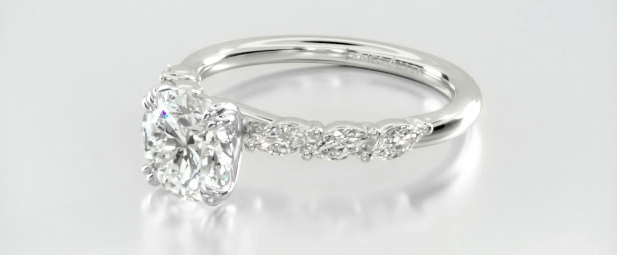
(find more stunning platinum pave settings here)
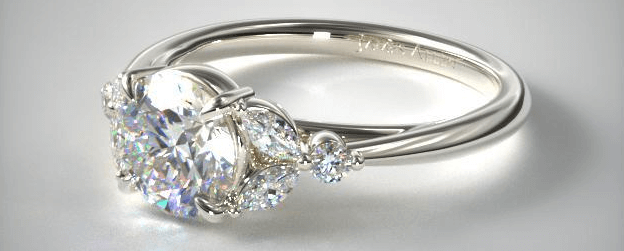
(find more vintage platinum settings here)
Can you tell the difference between platinum and white gold?
Platinum’s natural color is a radiant silvery-white, which is stunning. And because it has the added advantage of being hypoallergenic, it’s in high demand for jewelry. Eighteen-karat white gold looks similar, having the same silvery-white color, which makes for gorgeous jewelry as well.
However, I don’t recommend 18k white gold for people allergic to nickel. Some people say that white gold has a slight yellowish tint, while others refute this. Realistically, nickel-based alloys tend to have a yellowish tone, while palladium-based alloys tend to have a darkish grey tone compared to platinum.
To be truthful, it’s hard to see any difference between white gold and platinum. This is not at all like comparing yellow gold or rose gold to platinum. Eighteen-karat yellow gold is a vibrant, rich golden color with a beautiful luster. Rose gold is an alloy mixture of copper and gold that creates a beautiful blush-pink hue.
How much does a platinum vs white gold ring setting cost?
The cost of platinum
Platinum rings are popular amongst couples who desire a traditional wedding band. As platinum is one of the most expensive jewelry metals, platinum engagement rings typically cost more than gold rings. The cost of a platinum ring generally depends on the quality and craftsmanship of the platinum ring design and the weight of the ring setting.
A platinum engagement ring typically falls between $1,000 and $10,000. Platinum wedding bands cost between $600 and $2,000.
You should know that the platinum ring’s width greatly affects the cost of the ring setting. If you have a tight budget for an engagement or wedding band, consider getting platinum smaller rings instead of platinum larger bands. Below, you can see what I mean:
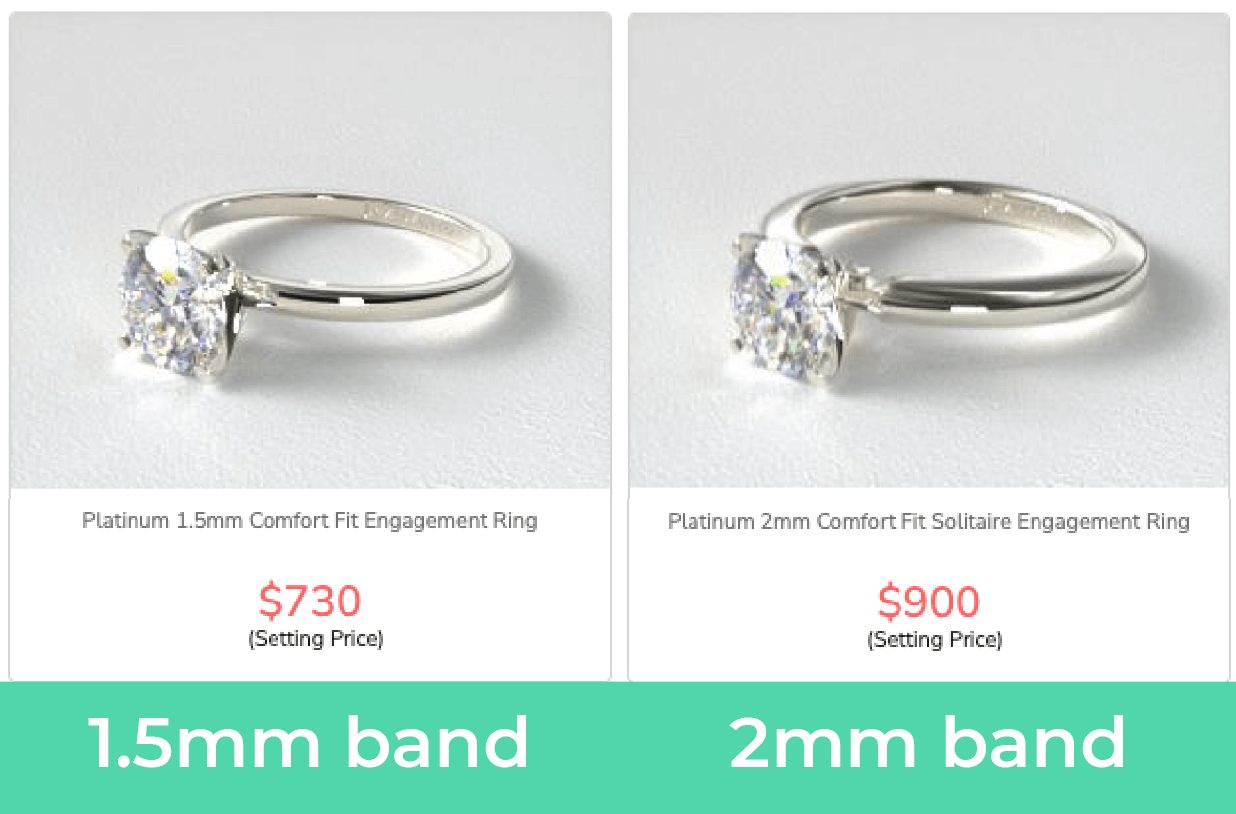
Another advantage is that the center diamond on a narrow band will look larger than on a wide band.
Furthermore, because platinum is such a durable metal, you can wear your platinum rings for years to come making it a financially viable option.
The cost of white gold
A white gold setting is generally more affordable than a platinum ring setting. White gold is made with an alloy consisting of white gold, nickel, and other metals. Because the ring is white in color, it can be plated with rhodium to create a similar appearance to platinum.
The price of a white gold ring setting varies based on characteristics such as type of metals that were chosen for the alloy, design, weight and whether you are choosing a 14k or 18k white gold ring.
A typical 14k white gold engagement ring setting costs between $240 and $2000.
An 18k gold ring is more expensive and would cost anywhere between $600 and $2200.
Below, I’m showing you the cheapest setting you can currently get in white gold, and one of the more expensive ones:

White gold ring settings are more affordable than platinum because white gold is more easily obtainable and less expensive to produce.
However, over time, white gold jewelry may end up costing you more because it requires so much more maintenance than platinum.
For example, white gold jewelry should be rhodium plated every 3 to 6 months. This will help to prevent the ring’s color from fading and keep it looking as white as possible.
Tip: If you purchase a white gold setting from James Allen, they will offer free cleaning and resizing services to you. You can read more about it here.
Is platinum or white gold better suitable for allergy prone skin?
One advantage that platinum has over white gold is that it is naturally white in color. This means that nickel, which is an allergen to some, does not have to be incorporated into the mixture.
One of the various alloys needed to create white gold’s color is nickel. This is a problem for people whose sensitive skin has an adverse reaction to nickel.
But, if you have white gold coated with rhodium plating, it can reduce or eliminate the allergic reaction. However, the plating will likely wear off over time. The metal will acquire a yellowish hue and a jeweler will need to replate it, which costs money.
Which one is more durable and needs less maintenance?
However, the disadvantage is that you may need to re-coat your white gold item in rhodium due to wear and tear, which can cause the diamond ring to turn yellow.
The rhodium plating on white gold rings could last up to three years, depending on whether you wear it every day or occasionally. The argument that platinum is less expensive over the long run is valid since it won’t require coating or re-coating.
Rhodium is about four times as expensive as platinum, but rhodium plating just requires “dipping,” which is not very expensive. Depending on how complex the setting is, you could spend $60 to $120 on having a ring recoated.
Conclusion: Is platinum better than white gold?
Both platinum and yellow gold have distinct benefits. Platinum is hypoallergenic, which means it requires no plating or re-plating. It has greater durability, and its natural color is white, although not pure white. White gold engagement rings are the most popular, mainly due to their lower cost. However, white gold is very durable and slightly outshines platinum.
A white gold engagement ring might be your best option if you’re on a strict budget and would rather spend your money on a more elaborate setting or a higher-quality diamond. But, if you prefer platinum, you may as well splurge.
Precious metals slowly increase in value over time. While the basic values of 24k gold and platinum are nearly identical, 14k white gold is not nearly as valuable as platinum because it lacks purity.
So, platinum vs. white gold, what do you prefer?

